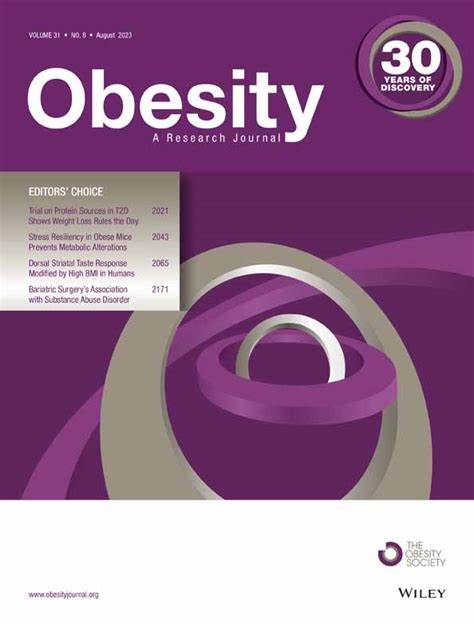Acid accumulation is associated with metabolic alterations; higher energy, fat, and protein intake; and energy expenditure
Abstract
Objective
The objective of this study was to study how acid accumulation (lower plasma bicarbonate and higher anion gap [AG] and corrected anion gap [CAG]) correlates with metabolic parameters, food intake, and 24-h energy expenditure (EE).
Methods
Acid accumulation was measured in 286 healthy adults with estimated glomerular filtration rate > 60 mL/min/1.73 m2. Measurements included body composition by dual-energy x-ray absorptiometry scan, ad libitum energy intake by a vending machine paradigm over 3 days, and 24-h EE in a whole-room indirect calorimeter.
Results
Lower bicarbonate, higher AG, and higher CAG were correlated with higher waist and thigh circumferences, body fat (percentage), fat mass, triglycerides, and lower high-density lipoprotein cholesterol. Acid accumulation markers were correlated with higher total energy (CAG partial r = 0.17; p = 0.02), fat (CAG partial r = 0.17; p = 0.02), protein intake (CAG partial r = 0.20; p = 0.006), and 24-h EE (CAG partial r = 0.24; p = 0.0007). A mediation analysis of CAG and total energy intake found that 24-h EE was a partial mediator (40%), but the association remained significant (β = 0.15; p < 0.0001).
Conclusions
In healthy individuals, acid accumulation was associated with an unfavorable metabolic phenotype; higher 24-h EE; and increased total energy, fat, and protein intake. Acid accumulation markers, as putative markers of higher dietary acid load (e.g., from protein), may affect energy balance physiology promoting weight gain.

 求助内容:
求助内容: 应助结果提醒方式:
应助结果提醒方式:


